 Butler is a hugely popular selection of nifty utilities for the Palm Treo smartphone that manages to fix many of the minor shortcomings of the phone in one fell swoop.
Butler is a hugely popular selection of nifty utilities for the Palm Treo smartphone that manages to fix many of the minor shortcomings of the phone in one fell swoop.
Billed as “The Essential Tool for the Treo 650 & 600”, Butler offers a suite of tools to help you set up the Treo the way you like it and introduce productivity-boosting extras.
Accessed through a rather basic looking interface, Butler offers repeating alarms with ringtones/MP3 playback, nagging alerts, extra security options, navigation enhancements, LED controls, keyguards and more.
 Launching apps
Launching apps
We particularly liked the Keylauncher feature which lets you fire off specified programs from any other application just by holding down a specified key.
Another option lets you specify different modes for the external volume buttons on the Treo; as ‘back’ and ‘forward’ controls for moving through recent opened applications used; a ‘select key,’ or as scroll bars (particularly useful for reading e-books).
 Lights out
Lights out
The Treo is one of those phones with a multicolour LED that is constantly broadcasting its status.
Butler lets you take control over the colours and flash rates, and includes an option to set the hours the LED will do its flashing thang (handy if you don’t fancy an all night disco show).
You can also set a specific colour to remind you of outstanding voicemails.
Onguard!
An improved keyguard lets you override Palm’s functions, offering control over the lock time (from 1-30 seconds) and the ability to disable the touchscreen, space, delete and return keys when incoming calls are received or in progress – so if you’ve got Spock-like pointy ears you won’t be inadvertently ending calls.
Oy! You!
To absolutely, categorically guarantee that you’ll know all about a missed appointment, incoming call, SMS, alert or voicemail notification, the “Attention Grabber” feature can nag you into submission, with options to keep on reminding you once every 10 seconds to every 15 minutes, from 5 to 1000 times.
Reminders can be assigned MP3, vibrating alarms or ring tones, and custom LED notifications set up with an option to set time periods when the program shuts the feck up.
 Butler also offers a straight alarm feature that lets you set up to 6 repeating alarms, complete with customised messages and the option to assign a program to open after you’ve cleared the alarm.
Butler also offers a straight alarm feature that lets you set up to 6 repeating alarms, complete with customised messages and the option to assign a program to open after you’ve cleared the alarm.
Nuke ’em
The trouble with smart phones is that you by carting around all that personal information there could be serious consequences if it gets lost or stolen.
To protect your data, Butlers offers a set of SMS-triggered security functions.
By sending your missing phone a pre-configured text messages, Butler can carry out a variety of security operations from simply turning off and locking your device to the Armageddon option which wipes the SD card and RAM clean.
We would have liked it if it hurled taunting abuse at the thief as the data was being deleted or even blasted out a massive electric shock, but I guess that would be too much to ask. And possibly illegal too
 Wrapping up the feature set is a “Hide SMS popup” option which stops you being bothered by SMS screens, an option to beam your business card by holding the phone button down and a useful “Keep Exchange Manager Clean” utility which addresses the annoying ‘preference loss’ bug seen on the Palm OS.
Wrapping up the feature set is a “Hide SMS popup” option which stops you being bothered by SMS screens, an option to beam your business card by holding the phone button down and a useful “Keep Exchange Manager Clean” utility which addresses the annoying ‘preference loss’ bug seen on the Palm OS.
Conclusion
Butler is a fantastic set of utilities for fine-tuning your Treo, richly deserving its place in Palm’s Best Seller list.
The interface isn’t the easiest to get your head immediately around, however, and sometimes things may seem a little confusing when first exploring the options.
 It’s worth persevering though because it won’t take long before you begin to wonder how you ever coped without Butler on your Treo – and at just $14.95 (£8.20,€11.90) it’s something of a bargain!
It’s worth persevering though because it won’t take long before you begin to wonder how you ever coped without Butler on your Treo – and at just $14.95 (£8.20,€11.90) it’s something of a bargain!
Features: 85%
Ease of use: 70%
Value For Money: 85%
Overall: 85%
Butler by Hobbyist Software
 Sitting right next to the baked beans and cornflakes at a Tescos near you soon should be Tesco’s new range of cheapo MP3 players.
Sitting right next to the baked beans and cornflakes at a Tescos near you soon should be Tesco’s new range of cheapo MP3 players.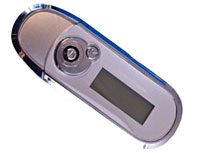 The interface is bog standard but straightforward – there’s not much to get confused about here – and the player connects to desktops via a USB interface.
The interface is bog standard but straightforward – there’s not much to get confused about here – and the player connects to desktops via a USB interface. Tesco are no stranger to this MP3 thing, launching an online music store back in November 2004, offering 500,000 tracks which can be downloaded for 79p, with albums costing £7.99.
Tesco are no stranger to this MP3 thing, launching an online music store back in November 2004, offering 500,000 tracks which can be downloaded for 79p, with albums costing £7.99.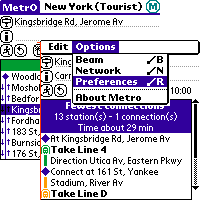 For globe trotters, city slickers, urban commuters and spoddy transport types, the freeware Metro looks to be a very useful application.
For globe trotters, city slickers, urban commuters and spoddy transport types, the freeware Metro looks to be a very useful application.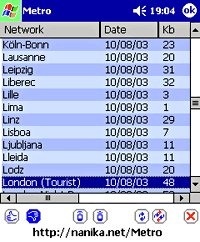 Using Metro
Using Metro Using the program’s simple interface, you can also get Metro to display station details, stops between the stations on your journey and even associate contacts with stations.
Using the program’s simple interface, you can also get Metro to display station details, stops between the stations on your journey and even associate contacts with stations. Conclusion
Conclusion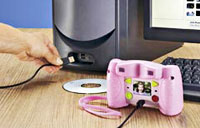 Back in our day, we were lucky if we got a lump of mud as a toy (Luxury! – editor), but kids today are spoilt rotten with an endless succession of frivolous gadgets demanding an unwelcome draining of parents’ wallets.
Back in our day, we were lucky if we got a lump of mud as a toy (Luxury! – editor), but kids today are spoilt rotten with an endless succession of frivolous gadgets demanding an unwelcome draining of parents’ wallets.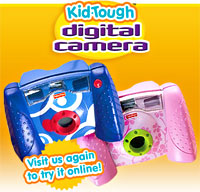 Fisher Price’s website doesn’t offer any details about camera resolution, but we figure it’s going to be pretty crappy.
Fisher Price’s website doesn’t offer any details about camera resolution, but we figure it’s going to be pretty crappy.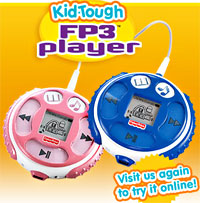 The circular player features big buttons and an LCD screen with icons to let kids pick their own choons and be a junior DJ Selectaaaaaa!
The circular player features big buttons and an LCD screen with icons to let kids pick their own choons and be a junior DJ Selectaaaaaa!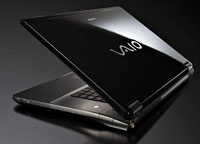 Sony has whipped out its first laptop equipped with a next-generation Blu-ray optical disk drive, saying that it will be available in Japan next month.
Sony has whipped out its first laptop equipped with a next-generation Blu-ray optical disk drive, saying that it will be available in Japan next month.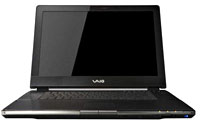 The AR-Series will also come with a HDMI (High Definition Multimedia Interface) output for hooking up the lappie to a HD-ready TV or Full HD desktop display.
The AR-Series will also come with a HDMI (High Definition Multimedia Interface) output for hooking up the lappie to a HD-ready TV or Full HD desktop display.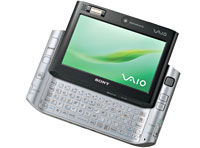 Powered by Intel Core Solo U1400 (1.2 Ghz)/U1300 (1.06 Ghz) the pint-sized PC will sport an Intel 945GMS Express chipset, 512MB RAM, 20/30 GB hard drive and 69 key QWERTY keyboard.
Powered by Intel Core Solo U1400 (1.2 Ghz)/U1300 (1.06 Ghz) the pint-sized PC will sport an Intel 945GMS Express chipset, 512MB RAM, 20/30 GB hard drive and 69 key QWERTY keyboard.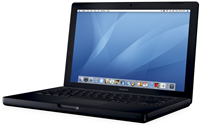 The much-anticipated launch of the low-end new Intel-powered MacBook’s has just happened – or IntelMac for the rest of us as it might become known (or not).
The much-anticipated launch of the low-end new Intel-powered MacBook’s has just happened – or IntelMac for the rest of us as it might become known (or not).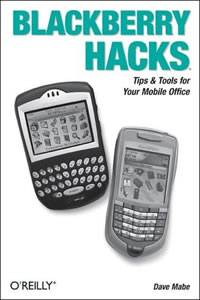 Another in the “hacks” range of O’Reilly books, where hacking is doing interesting things with something, rather than the unfortunate media convention of breaking into computers (which has some relevence as you’re getting into the guts of the BlackBerry in ways RIM, the manufacturer, may not have expected and/or indeed intended).
Another in the “hacks” range of O’Reilly books, where hacking is doing interesting things with something, rather than the unfortunate media convention of breaking into computers (which has some relevence as you’re getting into the guts of the BlackBerry in ways RIM, the manufacturer, may not have expected and/or indeed intended). The book also gives a good insight into programming the Blackberry and describes the tools that RIM provide and how to go about using them (and what other things you need to do). RIM originally made the BlackBerry for corporates and the last thing they wanted was nasty virii and programs infecting them, so when a program tries to access some of the BlackBerry’s inner workings the BlackBerry actually checks that the program is valid and should be doing that. RIM force programmers to “sign” programs and there’s info on how to go through that process.
The book also gives a good insight into programming the Blackberry and describes the tools that RIM provide and how to go about using them (and what other things you need to do). RIM originally made the BlackBerry for corporates and the last thing they wanted was nasty virii and programs infecting them, so when a program tries to access some of the BlackBerry’s inner workings the BlackBerry actually checks that the program is valid and should be doing that. RIM force programmers to “sign” programs and there’s info on how to go through that process. JupiterResearch have released research that indicates that 53 percent of Digital Video Recorder (DVR)/PVR users in America have used their DVRs to skip commercials.
JupiterResearch have released research that indicates that 53 percent of Digital Video Recorder (DVR)/PVR users in America have used their DVRs to skip commercials.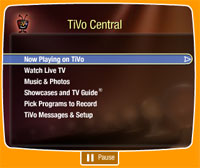 Now where we’re united with Jupiter is that people watch more TV when they’ve got a DVR. That is the experience of the vast majority of PVR/DVR users.
Now where we’re united with Jupiter is that people watch more TV when they’ve got a DVR. That is the experience of the vast majority of PVR/DVR users. Butler is a hugely popular selection of nifty utilities for the Palm Treo smartphone that manages to fix many of the minor shortcomings of the phone in one fell swoop.
Butler is a hugely popular selection of nifty utilities for the Palm Treo smartphone that manages to fix many of the minor shortcomings of the phone in one fell swoop.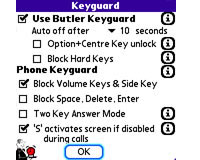 Launching apps
Launching apps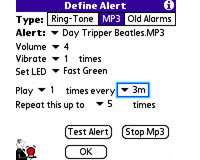 Lights out
Lights out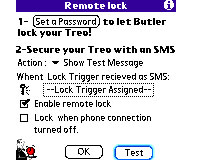 Butler also offers a straight alarm feature that lets you set up to 6 repeating alarms, complete with customised messages and the option to assign a program to open after you’ve cleared the alarm.
Butler also offers a straight alarm feature that lets you set up to 6 repeating alarms, complete with customised messages and the option to assign a program to open after you’ve cleared the alarm.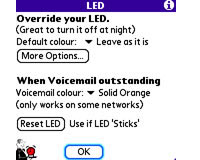 Wrapping up the feature set is a “Hide SMS popup” option which stops you being bothered by SMS screens, an option to beam your business card by holding the phone button down and a useful “Keep Exchange Manager Clean” utility which addresses the annoying ‘preference loss’ bug seen on the Palm OS.
Wrapping up the feature set is a “Hide SMS popup” option which stops you being bothered by SMS screens, an option to beam your business card by holding the phone button down and a useful “Keep Exchange Manager Clean” utility which addresses the annoying ‘preference loss’ bug seen on the Palm OS.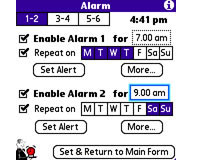 It’s worth persevering though because it won’t take long before you begin to wonder how you ever coped without Butler on your Treo – and at just $14.95 (£8.20,€11.90) it’s something of a bargain!
It’s worth persevering though because it won’t take long before you begin to wonder how you ever coped without Butler on your Treo – and at just $14.95 (£8.20,€11.90) it’s something of a bargain!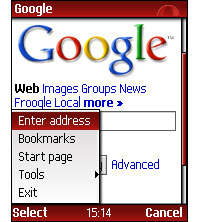 Nordic browser kings Opera Software have released Opera Mini 2.0, a spanking new version of their tiny Web browser that runs on almost all mobile phones.
Nordic browser kings Opera Software have released Opera Mini 2.0, a spanking new version of their tiny Web browser that runs on almost all mobile phones.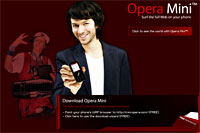 Also new for version two is a speed dial widget, which lets surfers call up bookmarks by assigning shortcut key combinations.
Also new for version two is a speed dial widget, which lets surfers call up bookmarks by assigning shortcut key combinations. With Opera Mini supporting mobile commerce via SMS, users can directly buy ringtones, games and other content for delivery as an SMS.
With Opera Mini supporting mobile commerce via SMS, users can directly buy ringtones, games and other content for delivery as an SMS.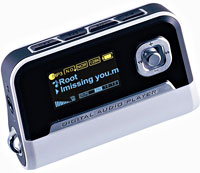 Proof that podcasting is moving further into the mainstream comes with the news that MP3 players from mobiBLU will be shipping with preinstalled software designed to download podcasts with just one click,.
Proof that podcasting is moving further into the mainstream comes with the news that MP3 players from mobiBLU will be shipping with preinstalled software designed to download podcasts with just one click,. With a wagging finger and nodding head, Russell Holliman, founder and CEO at Podcast Ready sighed, “There is a huge perception that podcasts are for Apple users only, and if you’re not using an iPod it’s a difficult process.”
With a wagging finger and nodding head, Russell Holliman, founder and CEO at Podcast Ready sighed, “There is a huge perception that podcasts are for Apple users only, and if you’re not using an iPod it’s a difficult process.” The appropriately named mobiBLU Cube is, at 0.94″ square, one of the smallest in the world and comes with a large OLED (Organic Light Emitting Diode) display.
The appropriately named mobiBLU Cube is, at 0.94″ square, one of the smallest in the world and comes with a large OLED (Organic Light Emitting Diode) display.